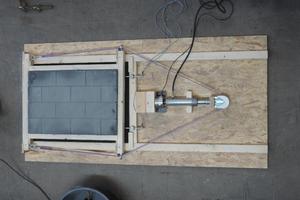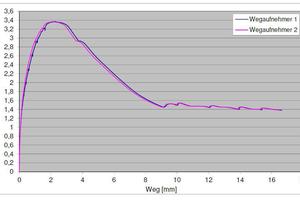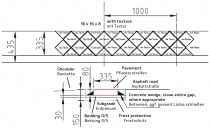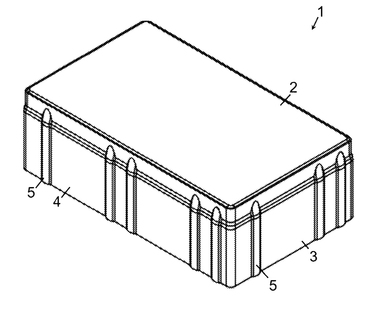Factors influencing shear resistance
We repeatedly see vertical and horizontal shearing in particular on more heavily frequented and more heavily loaded block pavements, which frequently results in damage to the paving blocks and impairs the serviceability of the paved surfaces. Whilst vertical shearing is in most cases caused by a lack of stability of the base layer and bedding, horizontal shearing is influenced to a much higher degree by the concrete block pavement. For this reason, comparative tests were carried out in the laboratory as part of product developments, and various influencing parameters were examined in greater detail. Taking into account the tests on the shearing behavior of profiled paving blocks conducted by Prof. Dr.-Ing. K. Krass in 2001, an experimental setup was developed for these tests that allowed a partial surface to shear horizontally under real-life installation conditions by applying a controlled load, and the shearing caused as a result to be detected by means of displacement sensors. The force-displacement curves resulting from these tests can be used to gain effective insights. In addition to varying the paving block properties (paving block format and thickness, as well as different variants of shear protection systems), the experimental setup also allows changes to be made in the joint width and filling, the installation pattern, as well as the materials used for bedding and joints.
The tests also showed, however, that the horizontal shear resistance cannot be guaranteed by the precast producers alone by means of shear protection systems. Even though such products do play a significant role in preventing horizontal shearing, it is rather a combination of numerous individual factors ranging from the design via construction and supervision all the way to maintenance and care during use.









